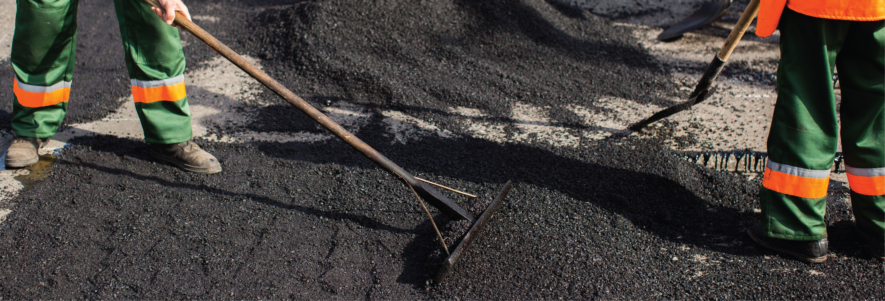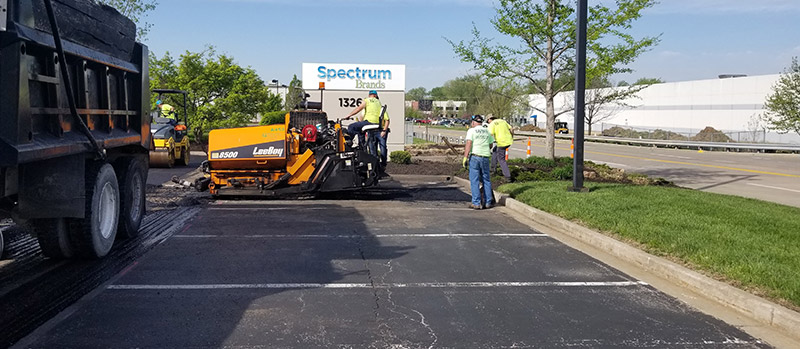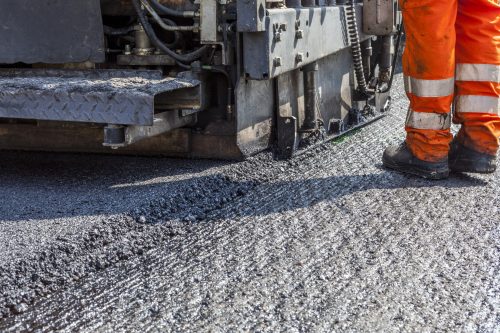The 10-Minute Rule for A1 Professional Asphalt & Sealing Llc
Table of ContentsRumored Buzz on A1 Professional Asphalt & Sealing LlcTop Guidelines Of A1 Professional Asphalt & Sealing LlcThe Main Principles Of A1 Professional Asphalt & Sealing Llc Some Known Factual Statements About A1 Professional Asphalt & Sealing Llc How A1 Professional Asphalt & Sealing Llc can Save You Time, Stress, and Money.

The oil in an automobile engine is not simply oil. The REOB contains all the additives that were in the waste oil as well as the wear metals from the engine (generally iron and copper).
By making numerous blends utilizing various REOB examples and different asphalt binders, the variations mainly can be balanced out. A number of States provided examples of well-known REOB make-up to TFHRC scientists, that analyzed the examples to compare the portion of added (known) REOB to the located (evaluated) amount. The evaluations showed a similar percent of included and found REOB.
What Does A1 Professional Asphalt & Sealing Llc Do?
They got an overwhelming action. The TFHRC researchers examined 1,532 examples from 40 States, one Canadian district, and two Government Lands Freeway departments. They examined each sample twiceamounting to greater than 3,000 evaluations. None of those States realized that the asphalt they were purchasing included REOB. One State insisted its samples had no REOB.
Of the 1,532 examples tested, 12 percent contained REOB, and some included appreciably high levels of it at 1020 percent. The highest possible degree was 34 percent in a sample from Texas, which TxDOT had used in a patching compound. This testing also revealed the presence of phosphoric acid in 11 percent of the examples, and 2 percent consisted of ground tire rubber.
Two years ago at TRB's yearly meeting, the Federal scientists held an REOB workshop and provided the findings of their research laboratory analyses to a standing room-only group. Some agencies do not specifically outlaw REOB, they do impose physical tests that preclude its useeffectively a ban. Others do not prohibit it by requirements, but have arrangements with asphalt providers to stay clear of using REOB
Everything about A1 Professional Asphalt & Sealing Llc
Ohio and Texas limitation degrees to less than 5 percent of the asphalt. To develop a trustworthy examination method that all States can use, the TFHRC researchers set up a round-robin examination strategy.
The individuals are testing the samples independently utilizing the standards given by the TFHRC scientists. The outcome will be a proposed AASHTO test method that any State can embrace and make use of.
The sidewalk with REOB, which lies 0.6 mile (1 kilometer) from the sidewalk without REOB, has identical subgrade, website traffic thickness, and climate. The section of Highway655 with 5 to 10 percent REOB showed substantial cracking. In this example, the existence of REOB was the recognized root cause of splitting at a reduced temperatures.
"In our experience in Canada, even small quantities of 23 percent can be a trouble." A section of test pavement in Minnesota (MN1-4) found to contain REOB additionally fractured too soon. The sidewalk done well for the very first 3 to 4 years, but after that started to break. This sidewalk is additionally subject to reduced temperature levels.
The 7-Second Trick For A1 Professional Asphalt & Sealing Llc
The tests were not comprehensive, yet they revealed that at degrees of 6 percent or more, the tensile strength of the asphalt dropped substantially. At a degree of 3.5 percent REOB, the variation in the physical examination techniques was above the effect of REOB. It next was difficult for researchers to evaluate whether REOB was existing. https://fliphtml5.com/homepage/unsho/a1asphaltsealng/.

One binder specification taken into consideration is the distinction in between the low temperature critical requirements temperature for stiffness (S) in the flexing beam of light rheometer and the bending light beam rheometer creep incline (m-value) kept in mind as Tcritical. Two independent study groups, one from AASHTO and the various other from the Asphalt Institute, wrapped up that more research is required on the use of REOB in asphalt.
Formerly, all asphalt testing determined design properties such as rigidity. These examinations do disappoint what products had actually been contributed to the asphalt. One example gotten during the TFHRC study had a really weird analysis. The example had the following examination outcomes: Superpave PG 64-28 with a heat quality of 67.3 Tcritical on the flexing light beam rheometer was 6.7 degrees Celsius.

Rumored Buzz on A1 Professional Asphalt & Sealing Llc
These results demonstrate there are weak points in the standardized design testing methods that might be exploited. The manufacturer may have an economic benefit and the item passes all the standard tests, but the product may not be advantageous to making sure lasting performance. To address this issue and the growth of new asphalt additives and extenders, TFHRC is starting a study program to use portable spectroscopic tools, x-ray fluorescence spectroscopy, and Fourier transform infrared spectroscopy to allow analyses to be carried out in the area instead than needing to take samples back to the laboratory.